
A series of worksheets and quizzes to reinforce identifying author's purpose.
- Subject:
- English Language Arts
- Material Type:
- Lesson
- Provider:
- E Reading Worksheets
- Author:
- E Reading Worksheets
- Date Added:
- 02/26/2019

A series of worksheets and quizzes to reinforce identifying author's purpose.
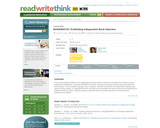
This lesson prepares students to be independent and responsible for their own just-right book selections during independent reading time. Using the BOOKMATCH poster, the teacher introduces various criteria that influence book selection, such as length, language, topic, and genre. Students select books for independent reading using several of these criteria. In subsequent lessons, they discuss and evaluate their book choices and are introduced to additional selection criteria. Ongoing support and practice lead to increased awareness of their personal preferences as readers.

This lesson allows students to reflect upon and personally relate to a teacher read-aloud of a narrative story that focuses on acceptable behaviors and ways to prevent bullying in class and at school.

In this excerpt from Galarza’s memoir he recants his experiences in a new school in a new country, the United States. He describes learning a new language and being introduced to new cultures and people in his new country. In this CCSS lesson, students will explore this memoir through text dependent questions, academic vocabulary, and writing assignments. Printable text files included.
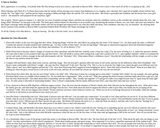
This resource is a collection of discussion questions and resoures to supplement Beacon Hills High, a story about an African American teenager's journey from Baltimore to Los Angeles and how she overcomes body-image, fame, cruel behavior and the other pressures of life.
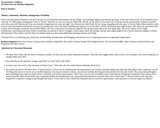
This resource is a collection of discussion questions to supplement The Bean Trees by Barbara Kingsolver.

In The Bear Boy, a man does not teach his son the ways of Pueblo life and how to transition into manhood. In this CCSS lesson, students will explore this story through text dependent questions, academic vocabulary, and writing assignments.
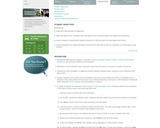
Students match the character traits of a character in a book they are reading with specific actions the character takes. Students then work in pairs to "become" one of the major characters in a book and describe themselves and other characters, using Internet reference tools to compile lists of accurate, powerful adjectives supported with details from the reading. The lesson uses The Scarlet Letter as an example, but this activity is effective with any work of literature in which characterization is important.

In this lesson, students compare the classic tale with a version set in the pre–Civil War South, Moss Gown by William Hooks, noting the architecture, weather, time period, and culture as depicted in the text and illustrations. Internet research projects and Story Map graphic organizers then provide background for a discussion of how the setting of a story affects the characters and plot. Students read one or more other versions of the Cinderella story and compare them using a Venn diagram. During the final two sessions, students plan, write, and peer edit their own Cinderella stories.

A teaching resource for actiities, research assignments, writing prompts and cooperative activities for Ben Franklin including Poor Richard's Almanac.

A teachers guide for Betsey Brown by Ntozake Shange, including chapter-specific questions for increased comprehension, questions for class discussion, and suggestions for further study.

Students will understand common Greek and Latin roots through participating in this engaging and interactive vocabulary game. Students will gain knowledge about word origins, and this knowledge and understanding will reinforce the connections among related words.
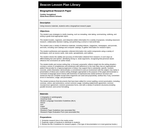
Using resource materials, students will write a biographical research paper.
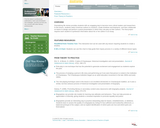
In this lesson, students select American authors to research, create timelines and biopoems, and then collaborate on teams to design and perform a panel presentation in which they role-play as their authors. The final project requires each student to synthesize information about his or her author in an essay.
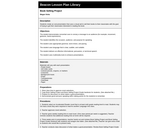
In this lesson, students create an oral presentation that uses a visual aid to sell their books to their classmates with the goal of trying to get their classmates interested in reading the book.
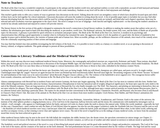
This is a collection of discussion questions and activities to supplement The Book of the Dun Cow by Walter Wangerin Jr.

José feels he is destined to a life filled with physical labor because both of his parents work hard. His mother works at a sewing machine all day, and his father works for the telephone company and often tells José that life is hard. In this CCSS lesson, students will explore this story through text dependent questions, academic vocabulary, and writing assignments.

In this set of lessons, students read excerpts from "The Death of Benny Paret" by Norman Mailer and "The Fight" by William Hazlitt. Students annotate the text, specifically looking for metaphor and simile, tone, and syntax. Working with a partner, students write three paragraphs, analyzing metaphor or simile, tone, and syntax in "The Death of Benny Paret." Working independently, students write one paragraph, choosing to analyze metaphor or simile, tone, or syntax in "The Fight."

Ruri, a young Japanese girl, and her family are taken to an internment camp during WWII because the US government was afraid Japanese Americans would ally with Japan. In this CCSS lesson, students will explore this story through text dependent questions, academic vocabulary, and writing assignments.
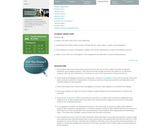
This brochure assignment teaches how shifting purposes and audiences can create change in a student’s writing. After exploring published brochures, students determine key questions, research a topic and work through the writing process to create their own informative brochure complete with visuals.